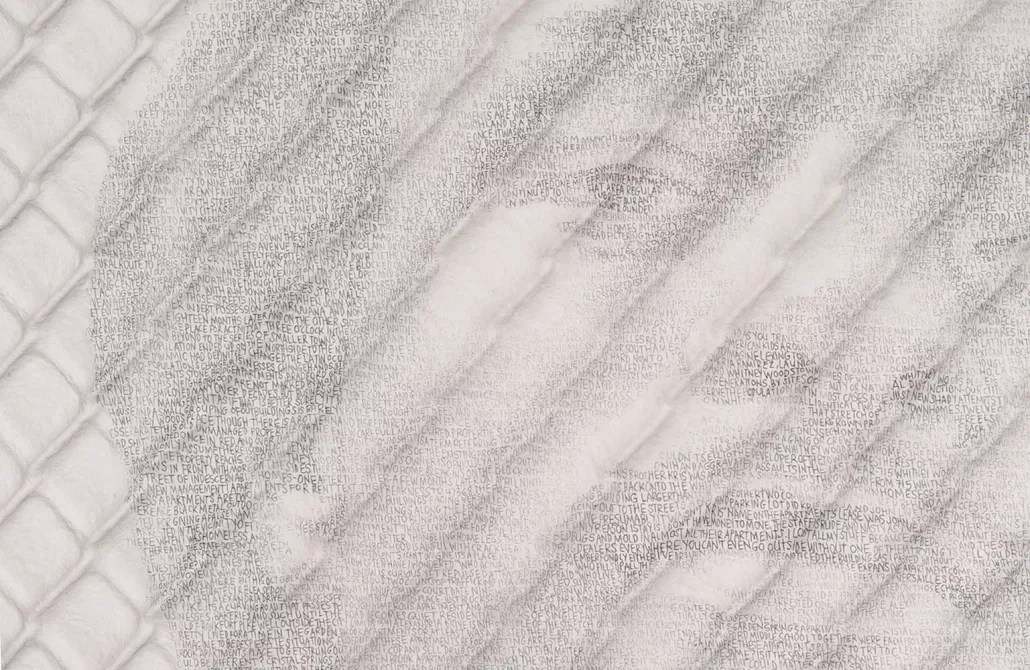
Courtesy of Lisa Sette Gallery

Audio By Carbonatix
The Trump era is giving artists plenty of material to work with, especially when it comes to white supremacy.
After Heather Heyer was killed amid Unite the Right protests in Charlottesville, Virginia, in August 2017, President Donald Trump remarked that there were “very fine people on both sides.”
Now the Dodge Challenger driven by the man who mowed her down is part of an artwork at Lisa Sette Gallery in Phoenix, where the “Subversive White” exhibit calls out racism in subtle and not-so-subtle ways.
Claudio Dicochea used various shades of white for 081217, which features the artist’s take on three cars he associates with American racism, consumerism, and violence. They’re hidden in plain sight, until you know what to look for, much like racism grows more glaring once it’s called out.
When news happens, Phoenix New Times is there —
Your support strengthens our coverage.
We’re aiming to raise $30,000 by December 31, so we can continue covering what matters most to you. If New Times matters to you, please take action and contribute today, so when news happens, our reporters can be there.
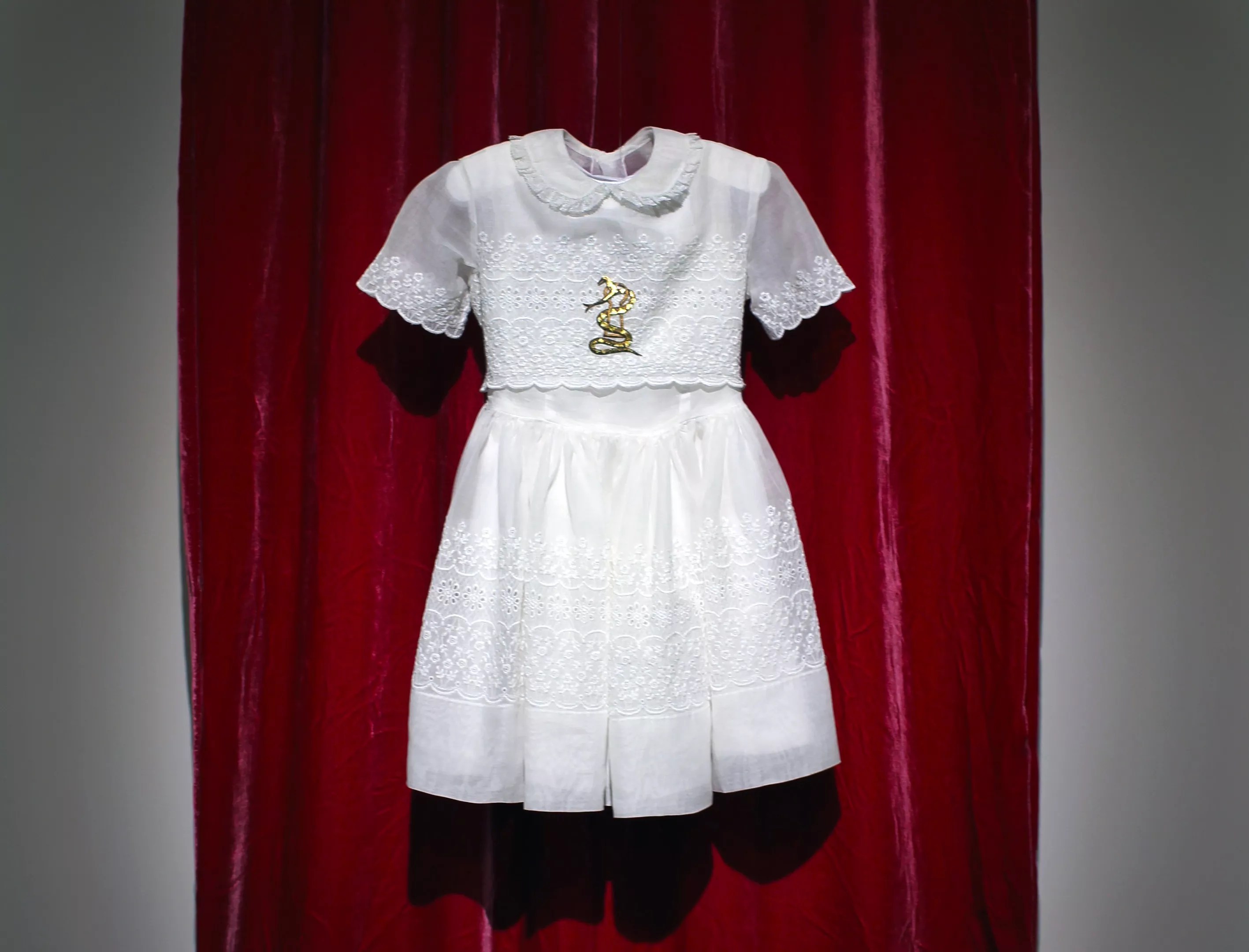
Trina McKillen, The Children (Communion Dress), 2015-2018. Irish linen, thread, gold leaf, 25.5″ x 16.5″, hanging dimensions can vary.
Courtesy of Lisa Sette Gallery
Lisa Sette is calling out racism and other forms of social injustice, along with 14 artists whose subject matter also includes clergy sexual abuse and the oppression of women. They’re all related, according to Sette’s essay for the exhibition catalog, which notes that white supremacy engenders and enables a host of oppressive systems.
Inside a small alcove, Sette has placed a white communion dress with an embroidered serpent, created by Trina McKillen to call the Catholic church to account for its own sins. It’s set opposite a sculpture by Angela Ellsworth, comprising a bonnet made with thousands of pearl corsage pins, which references patriarchal power structures in the Mormon church.
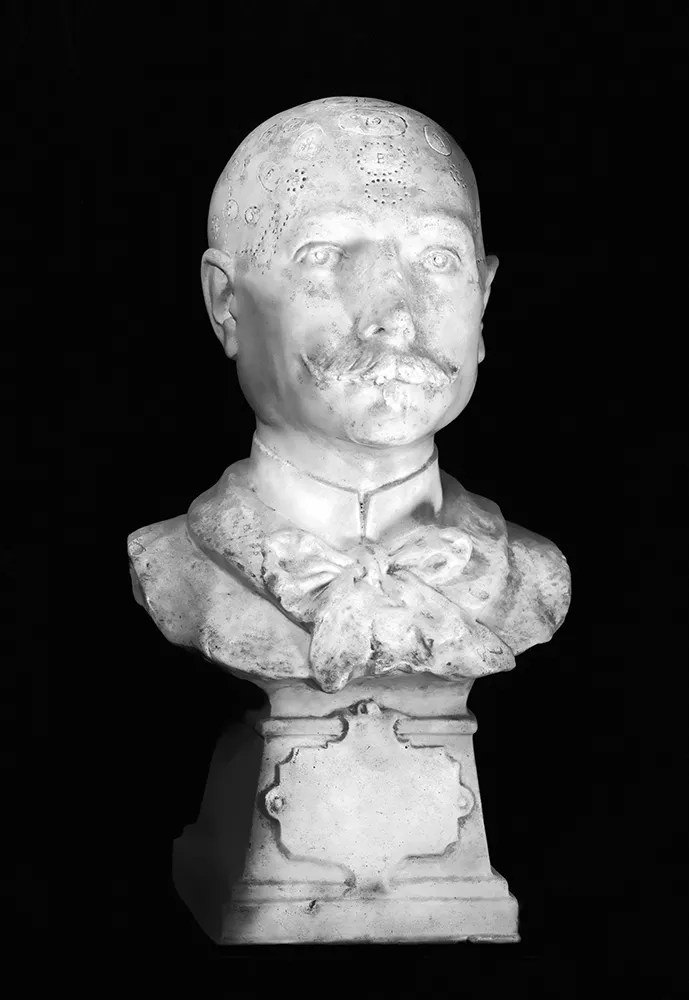
Fiona Pardington, Phrenology Head, Le Kremlin-Bic
Courtesy of Lisa Sette Gallery
Several of the artists worked with mostly white materials. But others, including Enrique Chagoya, went in a totally different direction. His colorful, accordion-style painting called Aliens in Borderlandia playfully challenges ethnic and gender stereotypes, even as Trump continues to vilify immigrants and call for a wall along the U.S.-Mexico border.
“Subversive White” includes several conceptual artworks, but artist Ann Morton took a more direct approach, creating a series of white handmade handkerchiefs embroidered with snippets of Trump’s own words in blue, altered using red editing marks. Proof-Reading #3 plays with one of Trump’s favorite phrases: no collusion.
A small exhibition catalog includes information on every artwork and artist, including a pair of photographs with meanings that aren’t clear unless you know the backstory. Fiona Pardington photographed a medical model once used to promulgate the idea of ethnic superiority. Rob Kinmonth photographed a set of George Washington’s dentures, conjectured to contain teeth pulled from mouths of slaves at Mount Vernon.
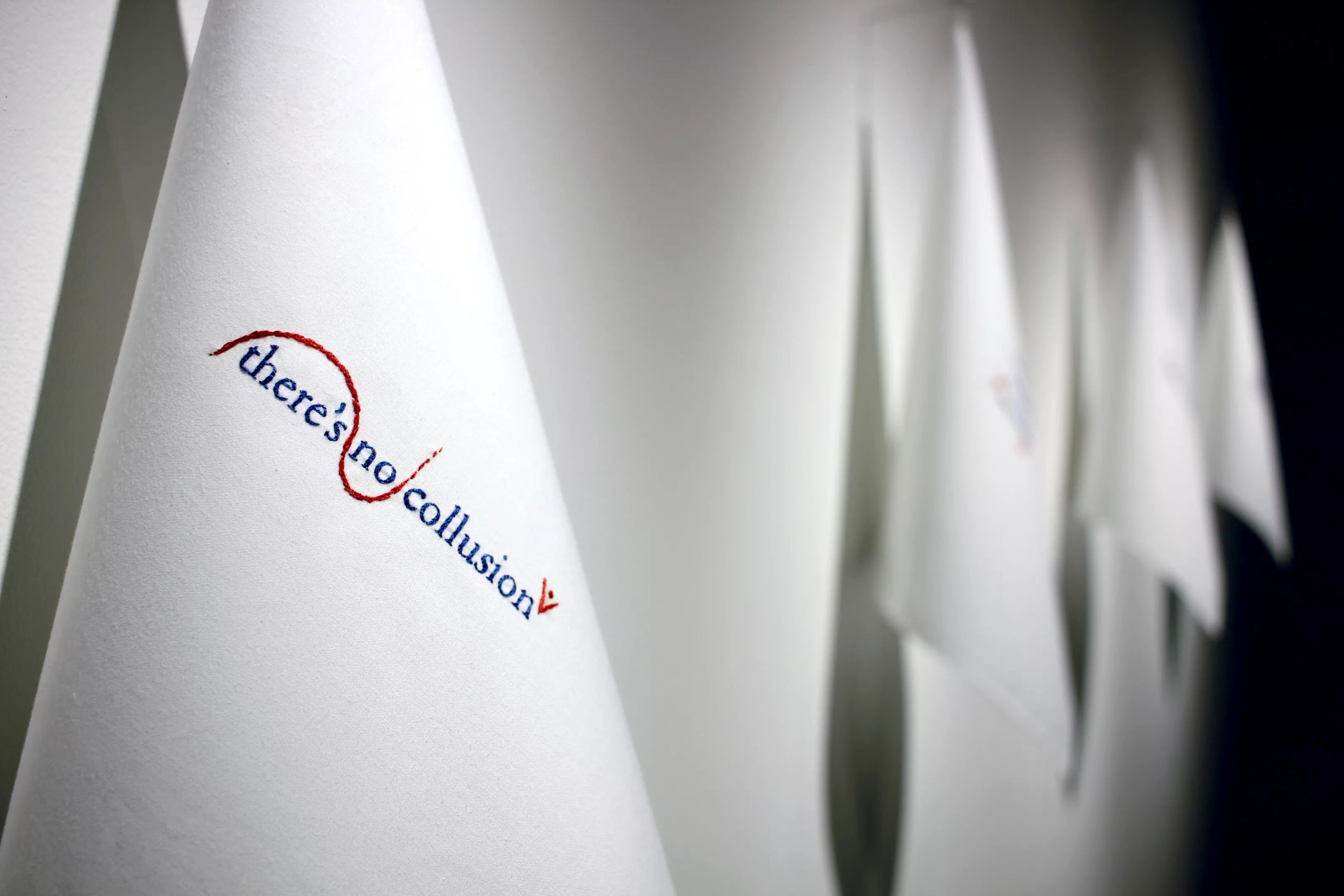
Ann Morton, Proof-Reading #3 (collusion), 2018. Handmade handkerchief with embroidery, 12″ x 12″ hanging dimensions 4″ x 15″ x 3″.
Courtesy of Lisa Sette Gallery
In some cases, these artists draw on their own personal experiences.
Ben Durham created a portrait from a mugshot, filling it with words rooted in memories of the teen acquaintance, then placing it over a chain link fencing as a way to highlight disparities in the criminal justice system. Sonya Clark created a flag-like form using African braids made with thread that resembles human hair, for a piece that reflects her African and Scottish heritage.
Some works focus on the perpetrators of racism. Others highlight those who resist it.
Mark Mitchell’s Cracker Party, a white sculpture resembling a bomb, pays homage to an intersectional armed resistance group active in the Pacific Northwest during the late ’60s and early ’70s. Julianne Swartz’s Stretch Drawing (Thick Jut) conveys individual and collective struggles to break though oppressive power structures.
The show also includes works by Carrie Marill, Ato Ribeiro, and Hank Willis Thomas. Together, these artists highlight the racism that permeates American culture, and the resistance seeking to root it out. But the exhibit also makes one thing abundantly clear: White supremacy is gaining dangerous momentum during the Trump era.
“Subversive White.” Continues through Saturday, April 27, at Lisa Sette Gallery, 210 East Catalina Drive. The exhibition is free. lisasettegallery.com.
Correction: An earlier version of this article had the name of the exhibit reversed.
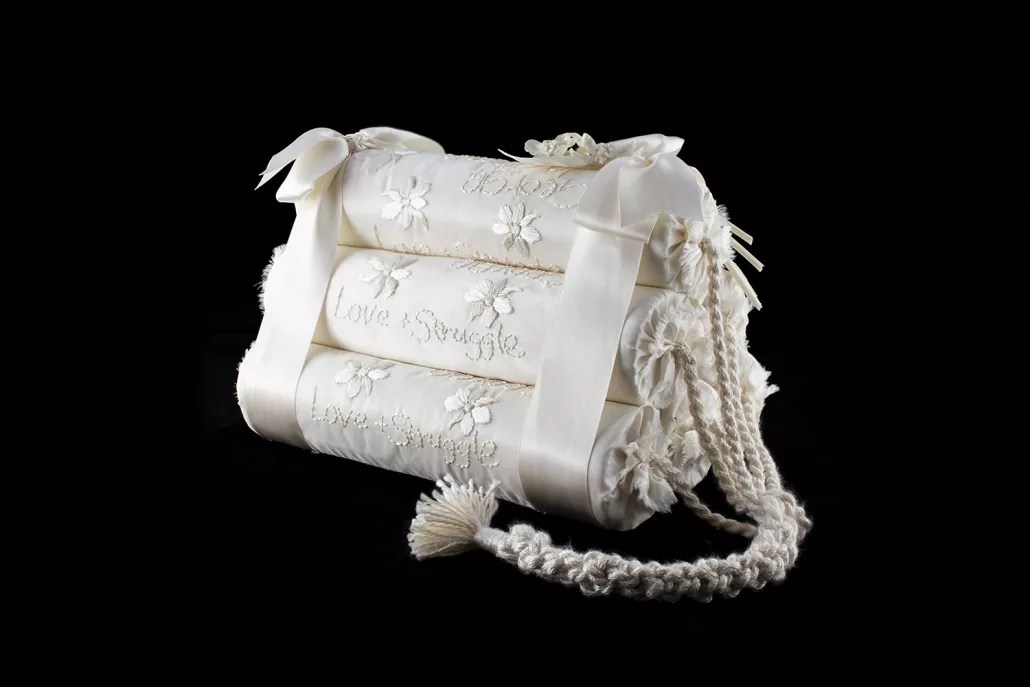
Mark Mitchell, Cracker Party, 2017. Silk floss embroidery, silk taffeta, cotton buckram and reed, 9″ x 6″ x 6″ (not including fuse).
Courtesy of Lisa Sette Gallery
Sonya Clark, Whitewashed, 2017. Painted directly on wall, made up of Sherwin Williams paint colors: “Incredible White, Storyteller, Natural Choice” (actual paint color names), 43.25″ x 82″. Edition of 10.
Courtesy of Lisa Sette Gallery